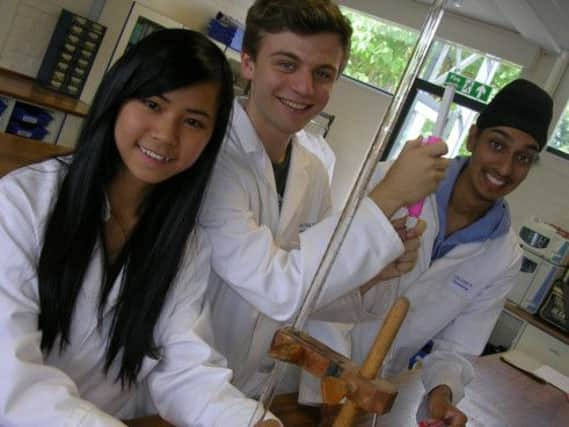College students synthesize aspirin


For the second half of the summer term AS Chemistry students have completed the entire synthesis of the pain relief drug: aspirin.
Starting with naturally occurring oil extracted from the evergreen Gaultheria plant, students employed techniques in organic chemical synthesis to modify a component of the oil into aspirin; chemically identical to the compound bought in chemists.
Advertisement
Hide AdAdvertisement
Hide AdIt is a wonderful time of year as students work relatively independently, putting much of the chemistry learned during the first year of A-level into practice. Students are often quite surprised at how skilled they have become during the AS year.
Once synthesised, each students Aspirin must be analysed to ascertain whether they have created the correct compound! A massive element of the project is Collyer’s collaboration with the global pharmaceutical company: Novartis, whose scientists visited the Collyer’s labs to aid students in their analysis.
Subsequently 120 students visited Novartis labs where they further learned of the high tech analytical techniques available to chemists and also had their Aspirin analysed.
Subject Leader for Chemistry Dr Rob Hussey said: “It’s a great time of year to spend time on this superb project and our students are really beginning to develop into chemists.
Advertisement
Hide AdAdvertisement
Hide AdThey should all be proud that they have skilfully synthesised a drug form scratch by manipulating molecules atom-by-atom; exquisite work”.
Melanie Russell, assistant principal at Collyer’s said: “We are hugely thankful to Novartis for their considerable involvement in this project. These students are the next generation of scientists and we are incredibly lucky that Dr Hussey and the chemistry team at Collyer’s have been able to work with Novartis to create this unique educational platform.”
Contributed by the College of Richard Collyer